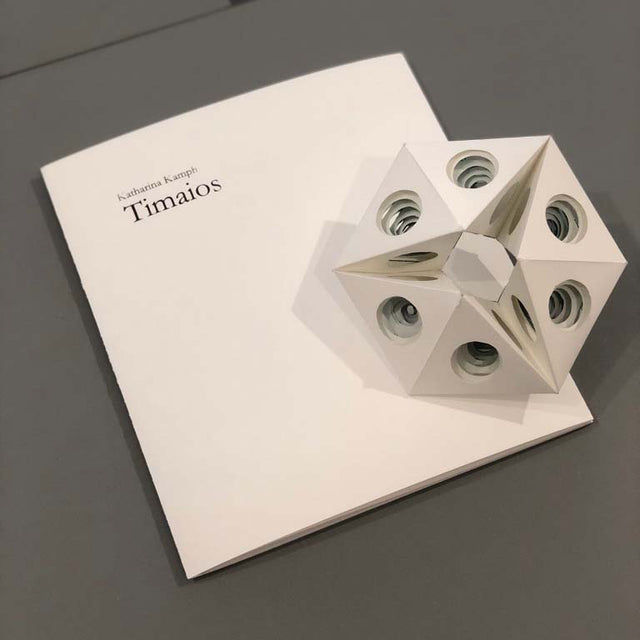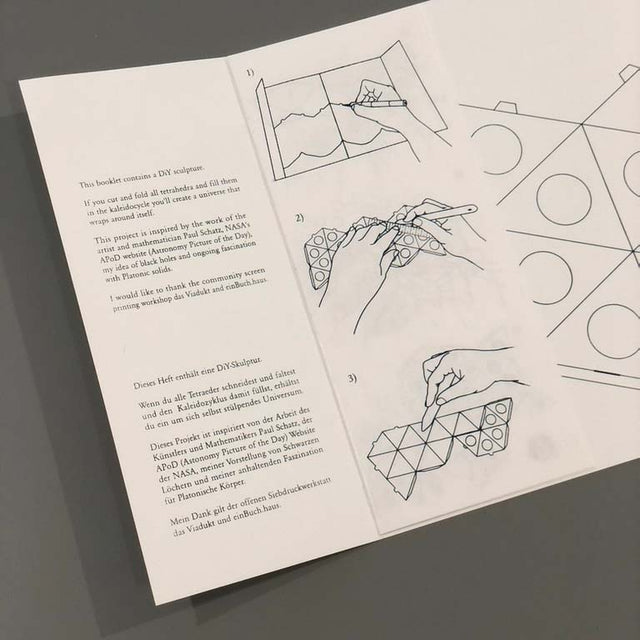





Timaios
Katharina Kamph's Timaios serves as a direct reference to Plato, who provides the first description of the Platonic solids in the creation myth Timaios. The protagonists Timaios, Socrates, Kritias and Hermokrates philosophise about the origin of the world. In his lecture on natural philosophy, Timaios explains why the cosmos is shaped by two factors: reason and necessity. Since God must have created the cosmos optimally, the nature of the world is made up of four fundamental elements, whose ultimate symmetry and thus beauty imperatively explain their existence.
Paul Schatz, a german mathematician, artist, and inventor, discovered in 1929 that the dodecahedron can be subdivided into two star bodies and a cube-belt, more specifically into movable inverted bodies or kaleidocycles. Kamph's Timaios is shaped in the form of a kaleidocycle and filled with several tetrahedrons. Plato's question about the origin of the World is brought into the context of an artistic object conceived by Paul Schatz added with tetrahedrons, that can be turned around forever and ever.
Her work pays homage to the D-I-Y thought, which cultivates the belief in oneself as the driving force of all change. D-I-Y promotes techniques and knowledge of self-empowerment, self-organisation and improvisation of amateurs.
* The sculptural object on the image can be made following the drawings & DIY kit introduction.
Timaios
Katharina Kamph
einBuch.haus, 2024
Silkscreen by artists at das Viadukt, Wien
Edition of 60 + 2 AP

Subscribe to our newsletter
Events, new artist books and prints informaton directly to your inbox.
einBuch.haus
Berlin-based project space and publishing house, showcases international artists and designers through exhibitions that transform the concept of a book into three-dimensional space, while also publishing these exhibitions in book format to highlight the medium of artists' books.
